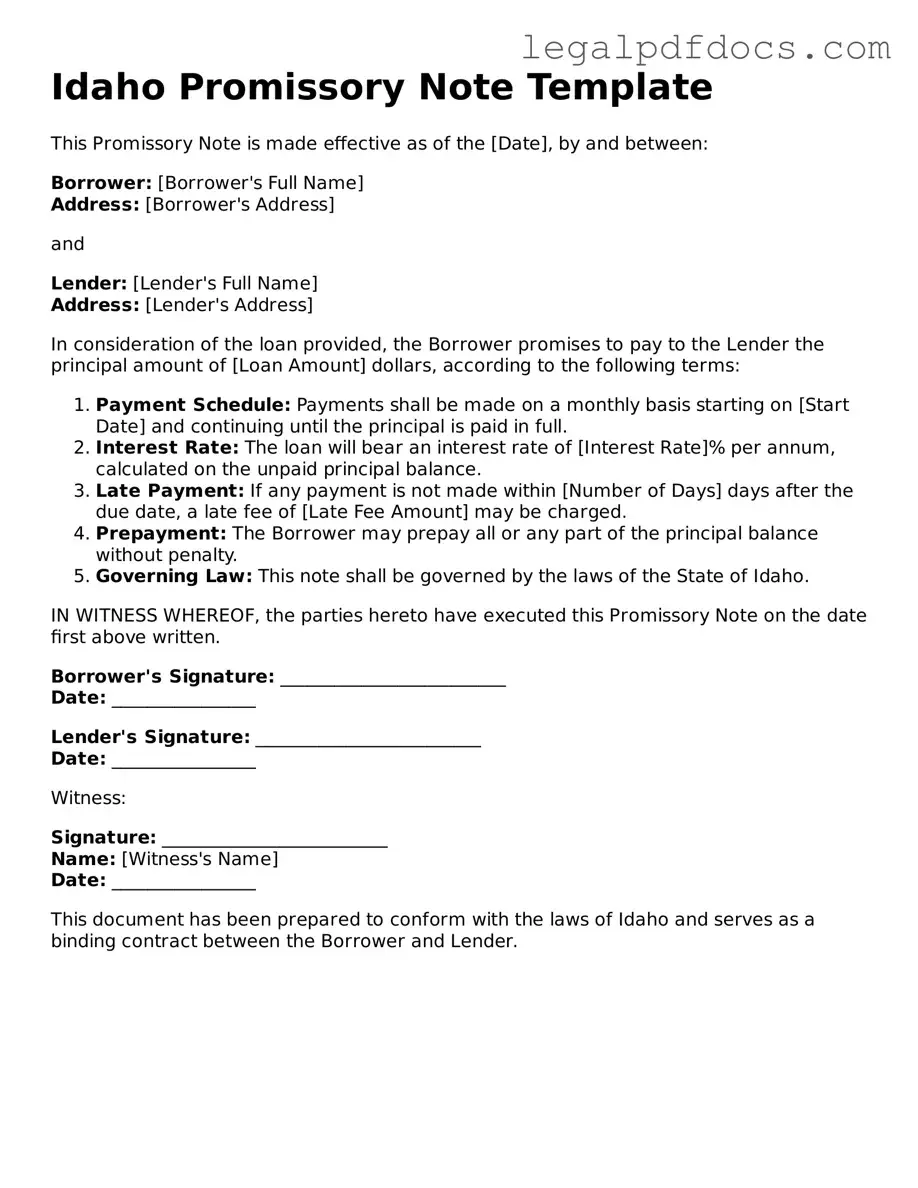Official Promissory Note Form for Idaho
A promissory note is a written promise to pay a specified amount of money to a designated person or entity at a predetermined time or on demand. In Idaho, this legal document serves as a crucial tool for establishing the terms of a loan agreement between parties. Understanding the nuances of the Idaho Promissory Note form can help ensure that both lenders and borrowers are protected in their financial transactions.
Ready to create your Idaho Promissory Note? Fill out the form by clicking the button below.
Open Promissory Note Editor Here
